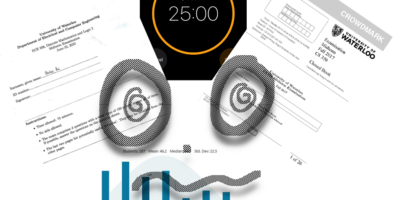I’d never really heard of The Legend of Zelda before my ninth birthday, when a good friend of mine got me The Wind Waker for my birthday. I didn’t really get it. I wasn’t really any good at video games until I was in high school. I never really grasped the whole stealth concept, and so I never got past the first visit to the forsaken fortress. Plus, even today I suck at platforming, so the whole swinging from lanterns at the start always stumped me. I think it took me six years to finally beat The Wind Waker (Twilight Princess was much less of an ordeal). I don’t think fifteen year old Donovan knew the definition of cathartic, but it totally was.
But what makes The Wind Waker so great? Literally everything.
There was a little bit of backlash when the cartoony style of The Wind Waker was revealed. Players had loved the previous console Zelda game, Majora’s Mask, which presented a bleaker, more realistic game experience. The general consensus among gamers was that Nintendo was going to continue down this path for their GameCube Zelda entry, but instead went the opposite direction. I’m glad they did.
Visually, The Wind Waker is amazing. The cel shaded graphics of the original version hold up to the present day, not even considering the HD remake from 2013. Cel shading is the graphic style that most resembles classic Saturday morning cartoons, and The Wind Waker’s graphics make it feel almost like a playable cartoon. As an avid fan of cartoons during my younger years, I thought that this was great. Even the colours are amazing (especially the blue of the Great Sea during the day). Hardliners for a more realistic Zelda game got their prayers answered with Twilight Princess, which has always been a little disappointing to me. The visuals dated themselves more quickly, and the storyline felt a little too formulaic.
The cel shading style also helped Link (and the other characters in the game) emote much better. Link always spends the majority of conversations listening, but his facial reactions in The Wind Waker allow the animators and storytellers to actually give him a personality.
Moving away from the sleek, polished graphics, I want to talk about the other major shift from the N64 Zelda games: the setting. The Wind Waker is set on islands in the Great Sea rather than the typical setting of Hyrule. Instead of riding across rolling fields and through thick forests on horseback, Link has to hop from island to island on his boat. Yeah, you read that correctly, his boat. And if just having a boat isn’t cool enough for you, the boat actually talks, and is one of your closest allies. How awesome is that?
Each Zelda game also has its own little gimmick. The Ocarina of Time started this trend with its namesake Ocarina. Majora’s Mask featured a heavy emphasis on acquiring and using masks to advance through the game. The Wind Waker, though, is the only game in my eyes where the gimmick isn’t too gimmicky. The Wind Waker primarily grants Link the ability to control the wind on the Great Sea, which is a pretty sweet asset for a sailor. The elegantly crafted conductor’s baton can also be used to conduct other musicians in the world to advance through the game. The only time in the game that the Wind Waker feels like a burden is the quest for the Triforce Shards, when Link is just sailing all over the place. The animation of the changing wind gets old pretty quickly at this point.
The Wind Waker is also an amazing game for its level of accessibility, which I’ve already touched on lightly. It was obviously meant to be a lead in game for the series, targeting a younger audience that Majora’s Mask may alienate with its darker tone. The Wind Waker features a younger version of Link than most other games and he doesn’t set off for some grand adventure at the start of the series, he’s just trying to rescue his kidnapped sister. Most people can relate to this in some way, having someone that you care about and wanting to protect. Eventually Link realizes he has to save the day (classic Link, am I right?) and by that point the player is either invested enough in the story to keep playing or has already given up.
For all of its childish charm, though, the overarching story of The Wind Waker is a tragic one. I’m sure that we all know the massive storyline that is the History of Hyrule, but I’m going to quickly summarize the events that lead to the game. The Ocarina of Time is a quintessential time travel story, so there are multiple timelines and everything’s a little messy. The Adult Timeline is the one that The Wind Waker takes place in. After defeating Ganondorf in the Ocarina of Time, the Hero of Time (Link) disappears and is never heard from again. Unfortunately Ganon rises again, and takes control of Hyrule. The people appealed to their Goddesses, who froze time around most of Hyrule and flooded the lands (don’t worry, most of the people were in this cool time bubble and were okay). Some people moved up onto the tops of mountains, which became the islands of the Great Sea.
Ganondorf had to settle for just waiting around; the majority of his magic was sealed away under the sea. Millennia, later Toon Link shows up and the events of The Wind Waker go down. Once Link reunites the Triforce though, things get real. The King of Hyrule (who is also coincidentally Link’s boat) decides that enough is enough, and that Hyrule had its chance. He uses the power of the Triforce to flood the lands and defeat Ganon once and for all, and then urges Link and Zelda to find a new land; not to be a new Hyrule but a new great kingdom.
Many games have a moral, but this one is so poignant and well delivered that it gets me every time. Live for the future, not the past.




Leave a Reply